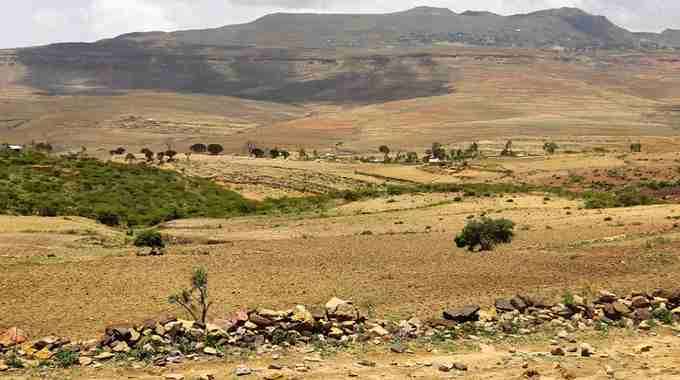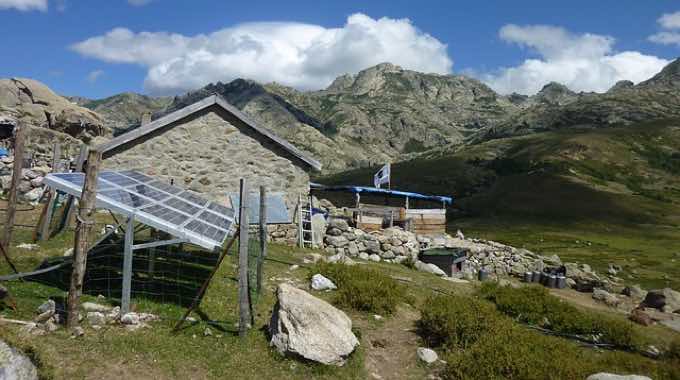Natural disasters take a significant financial, personal and psychological toll on those who live through them. The U.S. Substance Abuse and Mental Health Services Administration points out that natural disasters affect mental health not just before the event but after as well:1
“The toll and trauma that stems from disasters can contribute to stress and anxiety, acute stress reaction and ability to self-regulate — and for some, post-traumatic stress disorder.”
Although anyone may suffer psychological harm, children may be most at risk. Ramifications may extend to their ability to succeed in school, due to practical and psychological consequences. Following Hurricane Katrina, scientists noted increased aggressive behavior in high school students related to post-traumatic stress disorder and poorly regulated emotions.2
The extent of psychological harm may vary widely, but increases in those exposed to both a disaster and community violence and decreases in those who enjoy more social support from their peers.3Experiencing stress in America is not new, and the top stressors have long been money, work and the economy.
However, in the American Psychological Association’s 2017 Stress in America Report,4 they found an increasing number cited stress related to the political climate and their personal safety; 34% said their personal safety was a “very” or “somewhat” significant source of stress, which is the highest percentage since 2008.
However, preparedness may reduce these effects and the potential for injury or death. Studies5demonstrate stress associated with disasters may lead to or exacerbate problems associated with mental illness, substance abuse, and chronic diseases.
Other studies6 have also found community mental health preparedness for natural disasters is lacking and effective interventions7 will help provide strategies to understand the factors influencing behaviors.
Number of disasters are rising
The number of natural disasters worldwide continues to grow. Forbes Magazine8 writes these events have quadrupled since 1970. There were over 3,100 floods, storms and other extreme events listed in the World Disasters Report in 2018.9 Of these, 84.2% were triggered by weather changes and 134 million people required assistance in 2018.10
According to Our World in Data,11 the number of globally reported disaster events rose from near zero in 1900 to an all-time high of 432 in 2005. By 2018 the number had fallen to 282. The majority of those were flooded disasters followed closely by extreme weather.
To a lesser degree, extreme temperature, drought, and earthquakes were recorded. As emergency preparedness and personnel have improved strategies, the number of deaths has declined from an all-time high of near 73,280 in 1932 to 10,809 in 2018.
However, while the number of deaths has declined, destruction of property and the financial burden related to disasters has risen. The global cost of all natural disasters was $32.87 billion in 1980 and $107.77 billion in 2018.12
The Economist13 reports on the United Nation disaster monitoring system, which found America, China and India have suffered the greatest number of natural disasters between 1995 and 2015.
In response to these growing emergencies, the Red Cross14 and the U.S. government15 have launched national public service campaigns,16 “to educate and empower the American people to prepare for, respond to and mitigate emergencies, including natural and man-made disasters. The goal of the campaign is to promote preparedness through public involvement.”
Technology may bridge the gap and reduce deaths
Mobile technology is spreading rapidly around the world. Pew Research Center17 estimates 5 billion people have mobile devices and over 50% of these connections are smartphones. Although growing, smartphone ownership rates vary substantially, especially in emerging economies where lower socioeconomic situations increase vulnerability to disasters.
While only 40% of the populations in Indonesia, Kenya and Nigeria own smartphones,18 nearly 95% of Americans own a cellphone of some kind and 77% own smartphones.19 This growth in digital technology has provided disaster relief personnel with an additional weapon in their arsenal to help communities.
Disasters disproportionately affect vulnerable communities; in other words, those living in areas with poor infrastructure, safety networks and access to resources. However, smartphones have transcended many socio-economic inequalities and new types of mobile disaster apps are being developed and deployed to complement the way federal agencies help during a disaster or emergency.
Currently, the Red Cross20 offers a suite of apps used during weather emergencies. The Federal Emergency Management Agency (FEMA), provides weather updates, alerts and real-time safety tips and California has developed their Ready-for-Wildfire app, which helps prepare and respond to California wildfires. An app developed in 2008, Life360, helps families locate each other during an emergency.21
Most universities have notification systems for their students giving them information about incoming weather systems or active shooters on the campus. Atma Connect,22 the mission of which is to build social connectedness and resilience in vulnerable communities, built their first app in 2014 for a peer-to-peer water price sharing platform in Indonesia.
However, users soon asked the company to broaden the focus to allow use during flooding, so they could share safe routes and locations of shelters through the city and send out signs of waterborne diseases in children.23
The app now reaches over 2.5 million people in Indonesia and was instrumental in helping disaster relief workers and residents after a 7.5 magnitude earthquake and tsunami hit Indonesia in 2018. Deon Nel, CEO of the Global Resilience Partnership, commented to Forbes Magazine on the effectiveness of the AtmaGo app:24
“With climate-related disasters on the rise, the time to focus on resilience is now. What is incredible is the role social media like AtmaGo is playing in reducing mortality and morbidity from disasters, and helping communities organize garbage clean-ups and tree and mangrove plantings that reduce the severity of disasters.”
Social connectedness raises community resilience
Trauma is a component of the human condition and most are exposed to at least one during their lifetime. However, there are psychological variabilities in how people respond. While the answers are often complex and only partially understood, there is a body of evidence to suggest social support and connectedness increases resilience and reduces psychological trauma.25,26,27
Mobile apps are taking advantage of social connectedness, often an undervalued tool, to reduce the number of deaths and improve the ability of communities to bounce back quicker after disasters. For example, following the 2011 tsunami in Japan,28 it was noted communities who had greater ties and interaction worked more effectively to help family and neighbors.
Since the number of disasters and weather events are not declining, but rather increasing, and people in remote and dangerous areas are often underserved, mobile technology may be able to connect survivors and send early warnings to those who are usually missed. Peter Tavernise,29 executive directors of the Cisco Foundation, commented on the use of technology:30
“Technology has been playing a powerful role in preparedness and recovery from disasters. After a disaster, communication is one of the most important needs, and mobile apps and network communications are helping to improve the effectiveness and efficiency of response, ensuring people get their vital needs met in the days immediately after disasters hit.”
Plan, practice and stay informed
One of the most important first steps is to plan for an emergency, practice your plan and be informed of what may happen in your immediate geographical area. Disaster hazards come in all shapes and sizes and knowing what you need to do to evacuate yourself and your family may be the difference between life and death.
Your family may not be together if a disaster strikes, so it’s important they all have information about your plan and where to meet in case of an emergency. As you’re putting together a plan with your family, Ready.gov recommends you start by answering these four questions:31
- How will I receive emergency alerts and warnings?
- What is my shelter plan?
- What is my evacuation route?
- What is my family/household communication plan?
Have disaster mobile apps already installed on all smartphones in your family? Consider using an app with a weather emergency alert system to ensure you are notified when a natural disaster is imminent. With the use of an emergency notification app such as DialMyCalls, you are able to keep tabs on each other to avoid danger zones during a disaster. This will improve your chances of survival as a family greatly and do it effectively.
Vast amounts of data are collected during times of disaster subsequently employed to provide information used during the following emergencies. Several open source crisis-mapping software platforms are utilized,32 including information from third parties such as FEMA and Doctors Without Borders. Although technology cannot replace people during a disaster, it has transformed relief efforts and improved the way communities are able to develop resilience for the next natural emergency.
Ready.gov33 list the following types of emergencies that may require planning and information on your part. While tornadoes and power outages are ubiquitous, some areas of the world don’t often experience hurricanes, landslides or nuclear power plant emergencies. Know the natural disasters that may happen in your area, make a plan for yourself and your family and practice that plan.
| Active shooter |
Attacks in public places |
Bioterrorism |
| Chemical emergencies |
Cybersecurity |
Drought |
| Earthquakes |
Emergency alerts |
Explosions |
| Extreme heat |
Floods |
Hazardous materials incidents |
| Home Fires |
Household chemical emergencies |
Hurricanes |
| Landslides and debris flow |
Nuclear explosion |
Nuclear power plant failure or explosion |
| Pandemic |
Power outages |
Radiological dispersion device |
| Severe weather |
Snowstorms and extreme cold |
Space weather |
| Thunderstorms and lighting |
Tornadoes |
Tsunamis |
| Volcanoes |
Wildfires |
|
Severe weather hazards and personal preparedness
As you tailor your plans and supplies for your living needs and responsibilities, it’s important to network with others who may be able to help with the care of your children, business or pets, or who can supply durable medical equipment necessary for your family’s individual needs.
Ready.gov34 recommends keeping in mind the following factors when you create your personal preparedness plan for any natural emergency: Assign responsibilities, recognize dietary needs, make plans for medical needs including prescriptions and equipment and integrate the different members of your household into the plan.
Severe weather may happen at any time and in any part of the U.S. or any country. Many emergency apps will notify you of imminent weather, but in some parts of the U.S. pop-up thunderstorms are not unusual. Damaging winds, tornadoes, large hail, and flash flooding may increase your risk of personal injury.
It is important to understand the types of hazardous weather normally affecting your geographical area and be prepared to take action by developing an emergency plan and practicing it. FEMA35developed an emergency communication procedure to help families develop their coordinated plan.
This includes a printable communication card listing specific emergency numbers, email and plans that may be shared with family or friends in the immediate area and those outside your geographical area. This ensures those who may not be experiencing a disaster also have important information for your family.
Important numbers include the names and phone numbers of your physicians, medical and homeowner insurance and the phone numbers to your electric and gas company. Create a paper copy of contact information as well as sharing it digitally.
FEMA recommends having regular household meetings to review and practice the plan, which increases the likelihood of faster action. They also recommend using text messaging instead of phone calls since it requires less bandwidth and may be delivered quicker than trying to make a phone call during an emergency when phone lines are jammed.36
Severe heat and dehydration may lead to a personal disaster
Extreme heat is responsible for some of the highest numbers of annual deaths of weather-related hazards. In the U.S., this is defined as a period of three days or more of high heat and humidity with temperatures above 90 degrees Fahrenheit. In these conditions, evaporation slows and your body must work harder to maintain a normal temperature.
Extreme heat may occur quickly and, as humidity rises, so does the heat index,37 which is a measure of how hot it feels and not the actual temperature. Older adults, children and those who are overweight experience a greater risk of succumbing to extreme heat.
Other factors increase your risk include the environment, your nutrition and how long you’re outside. Age, medications and your metabolic rate are also factors impacting your response to heat.38
If you’re under an extreme heat warning, find an air-conditioned building, avoid strenuous activities and watch for signs of heat stress or heat illness. Heat stress may start with a rash that ultimately culminates in heat stroke. Clusters of red pimples or small blisters may appear in your neck, groin or chest. Heat cramps are involuntary muscle contractions occurring as your body loses fluid.39
Replacing fluids is important, but so is replacing minerals and sodium. It’s important to maintain hydration with water or coconut water,40 which supplies your body with minerals, salt, and energy without the disadvantages connected to sports drinks. Wear lightweight clothing, check on other family members and never leave people or pets in the car.41
Do not use electric fans when the temperature outside is more than 95 degrees F. While the airflow creates a false sense of comfort, it does not help reduce your body temperature and it increases your risk of heat-related illness.42
Know what to do during an active shooting
The U.S. has had more public mass shootings than any of the other 170 nations investigated by the U.S. National Institutes of Health in a study43 released in 2016. In 2017 there were 29 active shooter events in the U.S. in which an individual actively engaged in killing or attempted to kill.44
From 2000 to 2017 there were 250 active shooting incidents45 resulting in 1,418 people being wounded and 799 killed. Although it is impossible to predict where an active shooter will strike, recent events and statistics demonstrate they more commonly occur in businesses, schools, and government facilities.46
It is important to recognize the signs of potential violence around you and what to expect during and after an active shooting takes place. During an active shooting, Ready.gov47 asks you to remember to run, hide and fight, in that order. Be prepared by taking active shooter training, which can teach you how to stay as safe as possible in an emergency.
If you see something that doesn’t seem right, report it to someone in authority immediately. Stay aware of your environment and any possible danger at all times. Make a plan with your family so everyone knows what they should do if confronted with an active shooter, such as identifying the two nearest exits anywhere you go, and having an escape path in mind at all times.
Getting away should be your top priority. Leave behind your belongings and help others escape if possible. Ready.gov48 recommends evacuating whether or not others agree to follow. Once you’re safe, call 911 and describe as well as possible the shooter, location, and weapons used.
Fighting is the action of last resort and once you commit, Ready.gov49 recommends you act as aggressively as possible against the shooter, being prepared to cause severe injury in order to protect yourself and others.
Afterward, provide first aid while you wait for first responders to arrive. As emergency personnel arrives, keep your hands visible and empty, recognizing law enforcement’s task is to end the incident and ensure you were not part of it. Once the incident is over, seriously consider seeking professional help to cope with the long-term psychological and effects of severe trauma.
Read more great articles at mercola.com






 Most people go about their daily lives without giving a second thought to the possibilities that could change their lives radically. This includes problems such as earthquakes, terrorist attacks, warfare, disease, and other problems that most people simply cannot foresee. While you cannot predict if or when these problems will occur, this does not mean you cannot go some way toward preparing for them.
Most people go about their daily lives without giving a second thought to the possibilities that could change their lives radically. This includes problems such as earthquakes, terrorist attacks, warfare, disease, and other problems that most people simply cannot foresee. While you cannot predict if or when these problems will occur, this does not mean you cannot go some way toward preparing for them.





